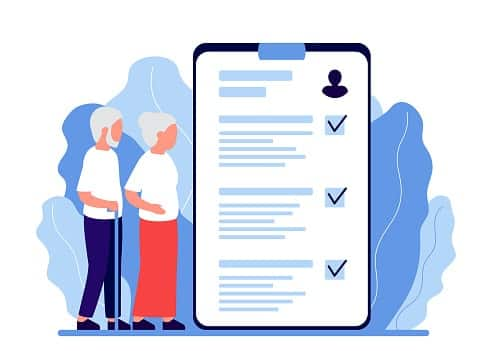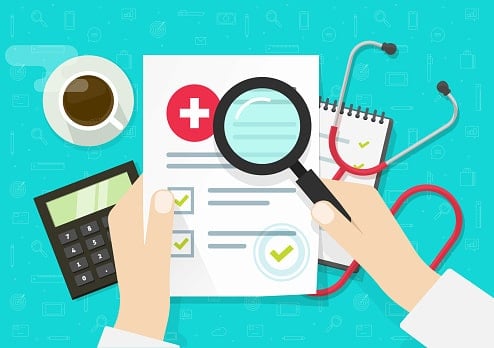Tip #1: Know your open enrollment deadline
Your open enrollment deadline depends on where you get your health insurance:
- Through your employer: Varies, but often coincides with ACA enrollment periods October through December.
- Through the ACA: Varies by state, but typically November 1 through January 15.
- Through Medicare: October 15 through December 7.
- Through Medicaid: January 1 through March 31
Most Americans get their health insurance through an employer. There is no standard open enrollment period for employer plans. Instead, the business chooses the open enrollment period. Check with your benefits department to find out when your open enrollment period will happen.
If you buy an individual or family plan via the Affordable Care Act (ACA) exchanges, or get health insurance on the individual insurance market outside of the ACA marketplace, open enrollment is set by the Healthcare Exchange or the insurer.
Open enrollment for ACA exchanges in most states is from Nov. 1-Jan. 15 for most (but not all) states. However, some states have different open enrollment periods. Here are the states with longer and shorter open enrollment periods:
- California -- Nov. 1 to Jan. 31
- District of Columbia -- Nov. 1 to Jan. 31
- Idaho -- Oct. 15 to Dec. 15
- Maryland -- Nov. 1 to Dec. 15
- Massachusetts -- Nov. 1 to Jan. 23
- New Jersey -- Nov. 1 to Jan. 31
- New York -- Nov. 16 to Jan. 31
- Rhode Island -- Nov. 1 to Jan. 31
Two other common ways Americans get insurance are through Medicare and Medicaid. There is no open enrollment period for Medicaid or the Children's Health Insurance Program, so you can request coverage at any time of the year.
Medicare's open enrollment period is from Oct. 15 to Dec. 7. During Medicare open enrollment, you can maintain the same coverage, change Medicare Advantage or Part D prescription drug plans, switch Medicare Advantage plans, or even change from Medicare to a Medicare Advantage plan. There's also a limited Medicare open enrollment from Jan. 1 to March 31, in which you can only switch Medicare Advantage plans or move from Medicare Advantage to Original Medicare.
Tip #2: Review your health insurance plan options
We went over the ways you can get health insurance. Now, let's talk about the types of plans. There are three main plan types.
Preferred Provider Organization (PPO)
A common health plan, preferred provider organization (PPO) plans are a popular choice. PPO premiums are usually much more than other plans, but plans are more flexible. PPOs allow you to see any doctor or specialist in your plan network. You can also go out of network for care, though that will likely cost you more.
PPOs don't require a referral from your primary care physician (PCP) to see a specialist. That opens up the healthcare system more than other plans. However, it comes with a cost. PPO premiums are often double that of other plans, such as health maintenance organization (HMO) plans.
Know more about what is PPO and what it covers.
Health Maintenance Organization (HMO)
HMOs have lower premiums than PPOs, but they also require you to stay in network. You also must get referrals from your PCP to see specialists. The idea is that the PCP "coordinates" your care. You may see a similar type of plan called an exclusive provider organization (EPO). EPOs also require you to stay within your provider network.
Read more about Health Maintenance Organization.
High Deductible Health Plan (HDHP)
High-deductible health plans (HDHP) are another low-cost option. Employers have increasingly turned to HDHPs to contain healthcare costs over the past decade. About one-third of employer-based health plans are HDHPs. Nearly all employer-sponsored health plans have a deductible.
What sets HDHPs apart from other plans is their low premiums and high deductibles. This means you won't have to pay as much each month for premiums but will need to pay more of the healthcare costs when you need services.
The IRS defines an HDHP as a plan with a deductible of at least $1,500 for a single plan and $3,000 for a family plan. The average HDHP deductible for a single plan is nearly $2,518, according to the Kaiser Family Foundation.
People employed by small companies pay more on average than large companies. For instance, 52% of small companies have a family deductible of more than $6,000. That's compared to just 13% of large companies with family deductibles beyond $6,000, Kaiser Family Foundation said.
To help you pay for the bigger deductible, employers usually pair an HDHP with a health savings account (HSA), which allows you to save for healthcare costs. We'll get more into HSAs later.
Those are the three biggest types of health plans, but there are others that aren't as common. Find out more about PPOs, HMOs, HDHPs, and other plans in our "Guide to Health Plans."
Here's what you need to know about HDHPs.
Tip #3: Compare premiums and out-of-pocket costs
When deciding on a plan, compare each plan's premiums and out-of-pocket costs. The costs can include:
- Premiums
- Deductibles
- Copays for doctor visits, urgent care, emergency room visits and prescription drugs
- Coinsurance
You might find one plan offers low premiums, but when you dig into it further, you'll likely discover you have to pay more when you actually use healthcare services. This is the case for HDHPs.
It's a good idea to think about how often you go to the doctor, which drugs you take and what services you and your family might need over the next year. Then, compare the costs of each plan.
Some good questions to ask yourself when deciding on a plan:
- Do you have a chronic illness, which requires regular doctor visits?
- Do you take expensive prescription drugs?
- Do you have a family or do you plan on starting one over the next year?
- Are lower premiums or lower out-of-pocket costs more important to you?
- Can you afford hefty out-of-pocket costs if there's an emergency?
Health insurers and benefits administrators usually provide that information during open enrollment so you can compare plans easily.
Shopping for a plan can be a way to save each year, but many people just stick with the same coverage. The Centers for Medicare and Medicaid Services estimates that about 40% of ACA plan members re-enroll in the same plan each year.
Tip #4: Compare benefits, coverage, and provider networks
Plans differ in terms of what is covered and where you can get coverage (the provider network).
What’s covered: Under the ACA, health insurance plans must cover essential health benefits, including:
- Emergency care
- Outpatient care
- Hospitalization
- Pregnancy and newborn care
- Mental health and substance abuse services
- Prescription drugs
- Rehabilitation services
- Lab tests
- Preventive and wellness services
- Dental and vision care for children
If you are not on an ACA plan, however, your coverage may vary,
Provider network and out-of-network coverage: The provider network available to you, and whether or not your plan offers any out-of-network coverage at all, depends on the type of plan you choose. Check to make sure that your plan:
- Offers out-of-network coverage if that’s important to you
- Accepts all of your current providers
- Has a good network of specialists, especially if you have any conditions that require specialty care
Tip #5: Learn how FSA, HRAs, and HSAs differ
Many employers offer accounts that help you save for medical expenses. Here’s a quick breakdown of how each works.
| Account type | Owned by | Rollover | HDHP only? | Pre-tax contributions |
|---|---|---|---|---|
| FSA | Employer | Limited | No | Yes |
| HSA | Employee | Yes | Yes | Yes |
| HRA | Employer | Varies | No | Yes |
- Flexible spending account (FSA): You decide how much pre-tax money to put in the employer-owned account through payroll deductions and then you can use that money to pay for out-of-pocket medical expenses. You lose any money if you change jobs or if you don't use it by the end of the year.
- Health savings account (HSA): Connected to an HDHP, an HSA lets you save money for medical expenses, including deductibles and copays. The account is yours, so you keep it when you change jobs. The money rolls over each year, so you don't have to worry about not spending it all each year. A bonus of HSAs is that some employers chip in money, too. Seventy-five percent of employers that offer HSAs contribute money into the account. Nearly one-quarter of companies that offer health insurance provide HSAs for employees. That includes more than half of large companies.
- Health reimbursement arrangement (HRA): An HRA is similar to an HSA except the employer owns the account, so you can't take it with you when you change jobs. You're able to contribute money for medical expenses just like the other two accounts. Money can be carried over to the next year like an HSA. Some employers donate money to HRAs, which helps you pay for medical expenses. The number of companies that offer HRAs is small compared to HSAs.
Open enrollment is an important time of year. Health insurance is one of the most important purchases you make. You need to make sure you have the right health plan for yourself and your family. Review your employer's information and talk to your employer's human resources department and benefits administrator. By doing your homework, you'll find the plan that's right for you.
FAQ: Open enrollment
Can I switch plans after open enrollment?
Yes, but only if you have a qualifying life event, like divorce, birth of a child or job loss.
How much money should I put in my flexible spending account?
That’s up to you. FSAs can be used for a wide variety of needs, so take a moment to consider what you spent on eligible costs the year before. Keep track of your FSA spending throughout the year so you’ll know if you need to start adding more.
Does health insurance cover vision and dental?
Some plans may offer a package that includes vision and dental, but usually, these are sold as separate policies. Make sure to read the coverage carefully.






